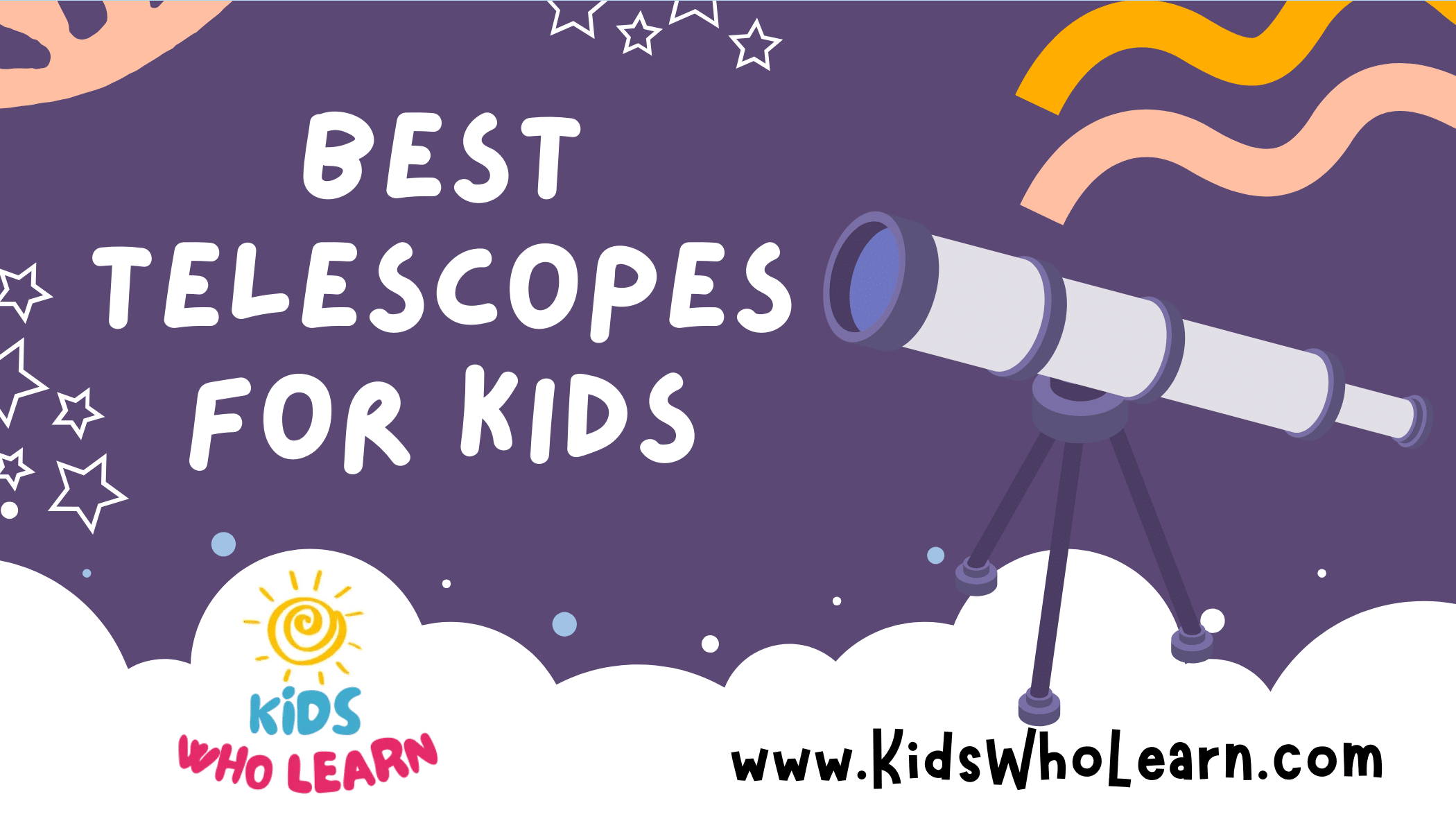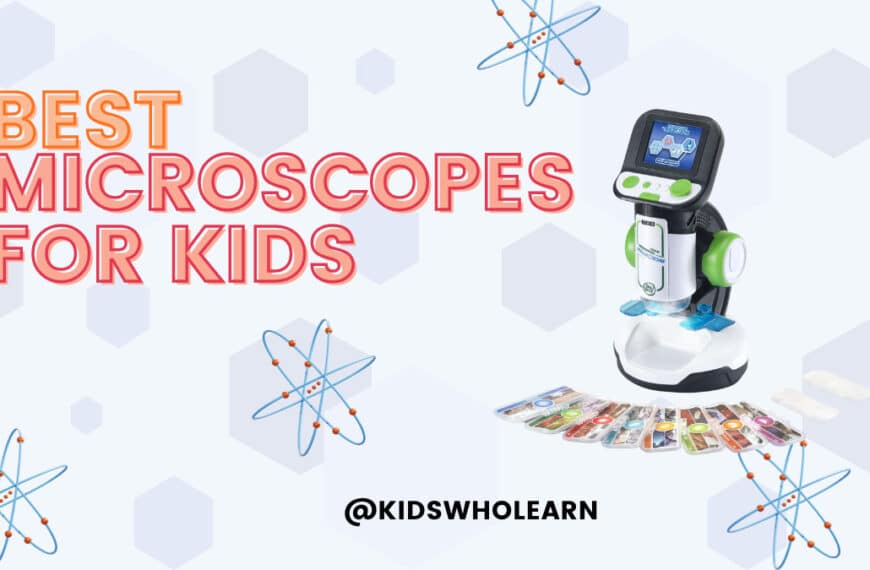Telescopes awaken a sense of curiosity and wonder in children, providing them with a hands-on educational experience. They serve as windows to the vast universe, introducing kids to the wonders of space and astronomy. A child’s first telescope is not just a tool—it’s an exciting gateway to exploring stars, planets, and distant galaxies. It can inspire a lifelong passion for science and discovery, making it a meaningful investment in a child’s intellectual growth.
When selecting the best telescope for a child, certain features are essential. First and foremost, the telescope must be user-friendly. It should be simple enough for a child to operate without constant adult supervision. Durability is also key, as the telescope will likely go through its paces in the hands of an enthusiastic youngster. Furthermore, a kid’s telescope should be lightweight and portable, enabling young astronomers to easily move it around for the best viewing experiences.
Important purchasing considerations include the telescope’s aperture—the diameter of its main optical component. Larger apertures allow more light to enter, granting clearer and brighter views. Magnification, stability of the mount, and the quality of the included eyepieces also play vital roles in the overall usability and enjoyment of the telescope. Some telescopes even come with additional educational materials to enhance the learning experience.
Choosing the right telescope can spark a child’s enthusiasm for science and lead to countless nights of stargazing and discovery. It’s essential to find a balance between a telescope’s sophistication and its ease of use to ensure that it becomes a beloved and frequently used instrument in a young astronomer’s hands. Let’s explore some of the top telescopes that hit this sweet spot and are known to ignite the spark of cosmic curiosity in kids.
Top Telescopes for Kids
In choosing the perfect telescope for young stargazers, we’ve focused on options that blend user-friendly features with the ability to ignite and sustain a child’s interest in astronomy. Our selection aims to provide children with the tools to explore the cosmos, emphasizing educational value, ease of use, and overall quality. Whether it’s to marvel at the Moon’s craters or to catch a glimpse of the planets, these telescopes are excellent gateways to the wonders above us.
ToyerBee Starter Scope
Our team believes this portable, beginner-friendly telescope is an ideal choice for young aspirant astronomers eager to explore the night sky.
Pros
- Offers a substantial magnification range
- Features a 70mm large aperture for clearer, brighter images
- Includes a smartphone adapter and wireless remote for easy photography
Cons
- Tripod stability could be better for some users
- The phone adapter may be challenging to use effectively
- Assembling might require parents’ assistance for younger children
Encouraging a child’s fascination with astronomy can be a thrilling adventure, and the ToyerBee Starter Scope is an excellent tool to kickstart that journey. With high magnification capabilities and a large aperture, it’s designed to bring celestial bodies into bright, clear focus. The accompanying accessories, including the wireless remote, enhance the overall experience by letting novices dabble in astrophotography right from their smartphones.
Despite its strengths, the telescope is not without minor setbacks. Some users have noted that the tripod is less steady than desired, which can impact the viewing experience. Additionally, the setup might be a bit complex for kids to handle alone, potentially requiring a pair of adult hands.
In conclusion, the ToyerBee Starter Scope strikes a fine balance between functionality and user-friendliness. While it could have better stability and a more intuitive assembly process, these are small hindrances compared to the educational and recreational value it provides young stargazers.
ToyerBee Starter Scope
We recommend this telescope as an excellent entry-level option for families beginning their stargazing adventures.
Pros
- Suitable for both kids and adults starting in astronomy
- Includes smartphone adapter and wireless remote for easy celestial photography
- Simple assembly, no additional tools required
Cons
- Smaller size may not satisfy those seeking more advanced features
- Magnification could be inadequate for serious hobbyists
- Focusing could prove challenging for some users
Selecting the right telescope for your aspiring young astronomer is crucial. The ToyerBee Starter Scope is designed with fledgling stargazers in mind, offering an accessible doorway to the cosmos. Its ease of setup and use ensures that the initial foray into astronomy is as smooth as possible.
With the integrated smartphone adapter and remote, sharing the thrills of space exploration becomes a family affair. Capture the moon’s crater-covered surface and share these moments with friends and family. It’s these experiences that can spark a lifetime of cosmic curiosity.
By approaching the night sky with the ToyerBee Starter Scope, we are embracing an educational journey. Despite its limitations for more advanced celestial viewing, this telescope serves as a capable tool for beginners. It holds the promise of many starlit nights and the potential to kindle a passion for the universe around us.
Nature Bound Kid’s Telescope
We recommend this telescope for its simplicity and child-friendly design, making it a fine starting point for young stargazers.
Pros
- Tailored for easy use by children
- Comes with a flexible tripod adjustable for various heights
- Doubles as an educational STEM toy promoting outdoor activities
Cons
- Some reviews question its durability
- Tripod may lack in stability
- Less of a telescope and more of a magnifying tool, according to feedback
Encouraging curiosity about the cosmos, the Nature Bound Kid’s Telescope caters to youngsters eager to explore the night sky. This instrument provides an acceptable 16X magnification suitable for beginners. It’s a delightful educational tool designed to make learning fun and interactive for kids six years and older.
The included tripod adjusts from a convenient tabletop setup to full stand-up height, allowing for versatility in how and where the mini-astronomer uses it. Whether viewing birds in the backyard or gazing at the stars, this flexibility is quite advantageous.
Mindful consideration should be given to this telescope as an introductory gift rather than a professional tool. While effective for sparking an interest in astronomy and the natural world, its build and optical power reflect its suitability for novice users. The emphasis on simplicity can be a double-edged sword, as sturdiness and precision are sacrificed for ease of use and general child-friendliness.
MEEZAA Kids Telescope
We believe this MEEZAA Telescope is a fitting choice for those beginning their journey into astronomy, offering a balance of quality and user-friendliness.
Pros
- Bright and clear images due to the 90mm aperture
- Versatile magnification range with the inclusion of two eyepieces and a Barlow lens
- Stable tripod and smartphone adapter enhance the viewing experience
Cons
- The initial setup might be challenging for beginners
- Some components may feel less durable over time
- A handful of users reported issues with the tripod quality
Educational and enjoyable, this telescope from MEEZAA emerges as a valuable tool for kids and adults alike. Its large aperture ensures that viewers can enjoy luminous and sharp images, which is essential when scanning the cosmos. The multiple magnification options bolster its capacity to bring celestial wonders, like the craters of the moon or the rings of Saturn, closer to our eyes.
The tripod’s stability is a cornerstone, allowing for smooth and seamless tracking of objects across the night sky. Paired with a phone adapter, this telescope also opens the door to capturing and sharing these astronomical marvels with a simple click. Thus, it becomes not merely an observational device but a means to preserve and share the enchanting experiences it facilitates.
While the telescope boasts commendable attributes, assembling it might pose some difficulty for those who have never used one before. Patience and careful reading of the instructions can alleviate this hurdle. Over time, some users might find that certain parts of the telescope exhibit wear. This is common within the category, yet if we treat the equipment with care, its longevity can be preserved. Few users expressed dissatisfaction with the tripod’s durability, but these are not an overwhelming majority, and customer support is available to address such concerns.
In conclusion, we see the MEEZAA Telescope not just as a product but as a gateway to the universe, ready to spark curiosity and wonder in its users. It adeptly melds user accessibility with the potential for deeper astronomical exploration. Considering its features and performance, it stands out as an inviting option for newcomers eager to embark on celestial observations.
Stargazer’s Delight Telescope
We believe this telescope strikes a balance between portability and functionality, making it a solid choice for young astronomers.
Pros
- User-friendly setup that requires no tools, minimizing hassle.
- Lightweight and portable design, complemented with a carrying bag for easy transport.
- Includes a phone adapter and wireless control for modern stargazing experiences.
Cons
- Stability might be an issue with the tripod, affecting the viewing experience.
- Some novices may need time to learn optimal use of the scope and its features.
- Additional magnification requires separate purchase of a more powerful eyepiece.
For young enthusiasts looking to explore the cosmos, this HEXEUM telescope is an appealing gateway. Its 80mm aperture and 600mm focal length promise a clear, bright view of the night sky. We appreciate the thoughtful inclusion of two eyepieces for varied magnification and the 3x Barlow lens that enhances the viewing power significantly.
Portability is a standout quality here; it’s facilitated with an adjustable aluminum tripod, a handy carrying bag, and a lightweight build. These features allow young astronomers to venture beyond their backyards in pursuit of clearer skies. Integrating technology, the setup includes a smartphone adapter and wireless remote, enabling users to capture and share their celestial discoveries with ease.
Considering the learning curve, it’s worth noting the scope’s ease of assembly and user-focused design. Despite the concerns about tripod stability—which is not uncommon in portable models—the telescope remains a solid option for beginners and intermediate users. We appreciate its compact form coupled with features that encourage a hands-on approach to learning astronomy.
Stargazing Starter Scope
We think this telescope is a solid choice for families looking to introduce their children to the wonders of astronomy thanks to its user-friendly features.
Pros
- Bright and clear images due to its large 70mm aperture
- Versatile magnification options ranging from 28X to 210X
- Comes with a phone adapter to easily capture and share observations
Cons
- Initial setup might be challenging for beginners
- The phone mount may require additional time to attach properly
- Could benefit from clearer instructions on lens usage
Weighing the importance of engaging young minds in astronomy, we appreciate the YUANZIMOO telescope’s ability to produce bright, vibrant images. Its 70mm aperture ensures that even dim celestial objects become a feast for the eyes. Offering a magnification span from 28X to 210X, the scope is versatile for daytime bird watching and nighttime star gazing, which can ignite a lifelong passion for the cosmos among youngsters.
The inclusion of a phone adapter is particularly appealing. It allows for the digital documentation of celestial encounters, making it not only an educational tool but also a source for creating lasting memories. We understand the significance of sharing these discoveries, thus making the adapter a valuable addition to the telescope’s set of accessories.
One should be informed, however, that patience is required when first setting up the scope. Detailed instructions are critical for a smooth experience, and there’s room for improvement in that area. Similarly, attaching a smartphone to the provided mount may take a little time, but once achieved, the reward is the ability to capture striking images of the lunar surface along with other planetary bodies.
In conclusion, this YUANZIMOO telescope can be an excellent entry point into the world of astronomy. Despite the minor setbacks that can be overcome with a bit of perseverance, the overall functionality and additional accessories cater well to budding astronomers. This scope tilts the scales towards a favorable balance between educational value and the sheer enjoyment of exploration.
HOROX Junior Stargazer
We recommend this telescope for its balance of clarity and portability, making it well-suited for young astronomers.
Pros
- A broad field of view with clear magnification
- Simple setup and highly portable
- Lifetime warranty provides peace of mind
Cons
- Manual focus can be challenging for some
- A slight learning curve in using the equipment effectively
- Eyepiece durability could be a concern
When introducing children to the night sky, the HOROX Junior Stargazer is a worthy option. Its significant aperture widens young eyes to the stars, while the range of magnification brings the moon’s surface within reach. Such features foster a sense of wonder, potentially sparking a lifelong interest in astronomy.
The instrument’s user-friendliness is a boon. We understand how crucial a straightforward experience is for beginners, especially when patience is as limited as a child’s attention span. The setup process, guided by clear instructions, is brief, rewarding us with more time for stargazing.
Practicality matters, whether we’re observing from our backyards or venturing further afield. A comfortable backpack carrying this telescope means we reach the perfect viewing spot without hassle. Furthermore, investing in a product with dedicated customer service and a lifetime warranty reassures us that our journey among the stars is well-supported.
Buying Guide
Understanding Telescope Types
We must first recognize the three primary types of telescopes suitable for kids:
- Refractors: Utilize lenses to bend light to a focal point.
- Reflectors: Use mirrors to gather and focus light.
- Compound: Combine lenses and mirrors to provide a compact design.
Key Features to Consider
Here is a breakdown of essential features:
| Feature | Description |
|---|---|
| Aperture | Size of the lens or mirror (larger aperture, brighter and sharper the image). |
| Magnification | Power to enlarge an object (depends on eyepiece). |
| Mount | Stability and ease of tracking objects (altazimuth is user-friendly, equatorial tracks stars’ motion). |
| Portability | Lightweight and easy to transport (important for outdoor exploration). |
| Finderscope | Helps in locating objects (a must-have for beginners). |
| Accessories | Quality of included eyepieces and tripods (extras can enhance the viewing experience). |
Durability and Usability
We should look for a telescope that balances robust construction with ease of use. Telescopes with simple designs are generally more durable and better suited for children. User-friendly features like a sturdy mount and an easily aligned finderscope can enhance their stargazing experience. It’s crucial to choose a telescope that a child can set up and adjust independently after a tutorial.
Educational Value
Opt for telescopes that come with instructional material for an educational angle. Handbooks or guides included can be incredibly beneficial for sparking a child’s interest in astronomy and facilitating the learning process.
Frequently Asked Questions
Selecting the right telescope for a child involves considering factors that will enhance their stargazing experience and sustain their interest in astronomy over time. Each child is unique, and we understand the importance of choosing a telescope that is both enjoyable and educational.
What factors should be considered when choosing a telescope for a child?
We must assess the child’s age, interest level, and the desired balance between complexity and usability. The quality of optics, ease of use, and stability of the telescope stand are crucial features to consider.
How do you determine the appropriate telescope size and complexity for a child’s age?
For younger children, we recommend telescopes with a sturdy build and simple operation. As children grow, they can handle greater complexity and more powerful telescopes, particularly if they show a strong interest in exploring the night sky.
What are the best telescope features for engaging young beginners in astronomy?
Telescopes with user-friendly features such as a red dot finder, easy focusing, and a wide field of view make for engaging first-time experiences. Equatorial mounts can also be beneficial for tracking celestial objects.
Are there reputable brands or models of telescopes recommended for children?
Certain brands stand out for their reliability and quality, such as Celestron and Orion. Models like the Celestron FirstScope and the Orion FunScope are specifically designed for young astronomers.
What safety aspects should parents consider when purchasing a telescope for their kid?
Ensuring the telescope has no small, easily detachable parts to avoid choking hazards is essential. We also advise against telescopes with exposed optical elements to protect children’s eyes.
How can a parent foster a child’s interest in astronomy through the use of a telescope?
We encourage parents to engage with their children in learning constellations, attending star parties, and visiting local planetariums. Consistent observation and sharing discoveries can significantly enhance a child’s astronomical journey.














